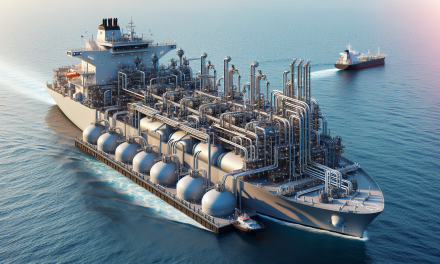Table of Contents
- Introduction
- Understanding Failures in Process Equipment and Piping
- Common Failure Modes
- Impact of Failures
- Prevention Strategies
- Efficient Repair Techniques
- FAQs
- Conclusion
Introduction
In the realm of industries involving manufacturing and energy, the resilience of process equipment and piping systems is pivotal to operational efficiency and reliability. A single failure can ripple through a supply chain, causing delays, safety hazards, and significant financial repercussions. Hence, understanding the factors contributing to these failures, developing robust prevention strategies, and implementing efficient repair techniques are crucial for maintaining seamless operations.
Understanding Failures in Process Equipment and Piping
Failures in process equipment and piping systems can disrupt productivity and compromise safety. These failures can arise due to various factors, including material fatigue, wear and tear, thermal stress, and corrosive environments. Recognizing these potential issues helps in formulating the right strategies to tackle them.
Why Do Failures Occur?
Failures typically occur due to a combination of design flaws, operational errors, and environmental conditions. For example, the choice of materials and maintenance practices plays a critical role. When engineers select materials that cannot withstand the operational conditions, such as high temperatures or corrosive substances, failures become imminent. Moreover, improper installation or lack of regular maintenance can accelerate deterioration.
Identifying Risks Early
Early identification of risks is vital in preventing failures. Implementing regular inspection regimes can highlight potential issues before they escalate. Furthermore, employing advanced monitoring technologies, such as pressure sensors and temperature gauges, allows for real-time data collection, helping teams assess system performance effectively.
Common Failure Modes
Different modes of failure manifest across process equipment and piping systems. Understanding these modes enables effective monitoring and prompt interventions.
Material Degradation
Material degradation arises from various factors, including corrosion, erosion, and fatigue. For instance, corrosive materials can slowly eat away at pipes, ultimately leading to leaks. Regularly analyzing materials and their properties can preempt these issues.
Mechanical Failures
Mechanical failures can stem from misalignments or inadequate tension in piping systems. These failures often result in system shutdowns and costly repairs. Regular maintenance checks can prevent these situations by ensuring that all components function harmoniously.
Thermal Stresses
Thermal stresses may occur when equipment is exposed to fluctuating temperatures. Expansion and contraction can lead to cracks or bends in piping. Implementing thermal expansion compensators can help absorb stresses and protect the integrity of the systems.
Impact of Failures
The impact of failures stretches beyond immediate operational setbacks. Businesses face downtime, increased maintenance costs, and potential legal ramifications from accidents or environmental spillages. Moreover, the unexpected nature of failures can damage a company’s reputation, leading to a loss of client trust.
Financial Implications
The financial implications of equipment and piping failures can be staggering. Companies may incur direct repair costs and associated indirect losses from halted production. Moreover, regulatory fines for environmental violations can significantly affect financial standing.
Safety Risks
Beyond financial concerns, safety poses a paramount issue. When equipment fails, the potential for hazardous situations increases. Employees may face injury, and communities can be put at risk from leaks or spills. Prioritizing resilience in equipment design directly correlates with enhanced safety measures.
Prevention Strategies
Implementing effective prevention strategies reduces the likelihood of failures, ensuring smoother operations.
Routine Maintenance
Establishing a structured maintenance schedule allows teams to address wear and tear before it leads to failure. Regular inspections help to identify signs of degradation, enabling timely interventions.
Training and Awareness
Equipping staff with the necessary skills is vital. Ongoing training ensures that technicians are knowledgeable about the latest technologies and practices. Consider the resources available at Process Equipment & Piping Resilience: Repairs & Prevention to enhance your team’s capabilities.
Investing in Quality Materials
Choosing premium materials for fabrication ensures that process equipment and piping systems withstand harsher conditions. Investing in high-quality components provides longevity and reliability.
Efficient Repair Techniques
When prevention strategies fail, having efficient repair techniques ready can save time and resources.
Quick Response Protocols
Establishing quick response protocols significantly reduces downtime after a failure. By training response teams and maintaining easily accessible resources, companies can swiftly address issues as they arise.
Using Advanced Repair Technologies
Incorporating advanced technologies such as robotic welding and 3D printing can expedite the repair process. These technologies not only save time but also enhance the precision of repairs.
Planning for Repairs
Creating a comprehensive repair plan ensures that resources are allocated efficiently. This plan includes everything from identifying potential problem areas to strategizing resource deployment during emergency situations.
FAQs
What are the main causes of process equipment failures?
Common causes include material fatigue, thermal stress, improper maintenance, and design flaws. All these factors can lead to significant operational disruptions.
How can companies prevent piping failures?
Companies can prevent piping failures through routine maintenance, employee training, investing in quality materials, and utilizing advanced monitoring systems.
Conclusion
In summary, enhancing the resilience of process equipment and piping systems is vital to ensuring operational efficiency and safety. By identifying potential failures, employing rigorous prevention strategies, and utilizing efficient repair techniques, organizations can not only mitigate risks but also foster a culture of reliability and excellence. For more insights on mastering process equipment and piping systems, explore this guide.
Furthermore, understanding intricate design principles can significantly impact operational success. Check out this comprehensive guide for detailed insights. Remember, effective troubleshooting can enhance performance, as demonstrated in documents like the one found here: Mastering Process Plant Troubleshooting. Additionally, a firm grasp of mechanical engineering technology is foundational. This guide can help bolster your understanding.
Lastly, to unlock the essentials of process and mechanical technology for optimal performance, check this essential guide.





